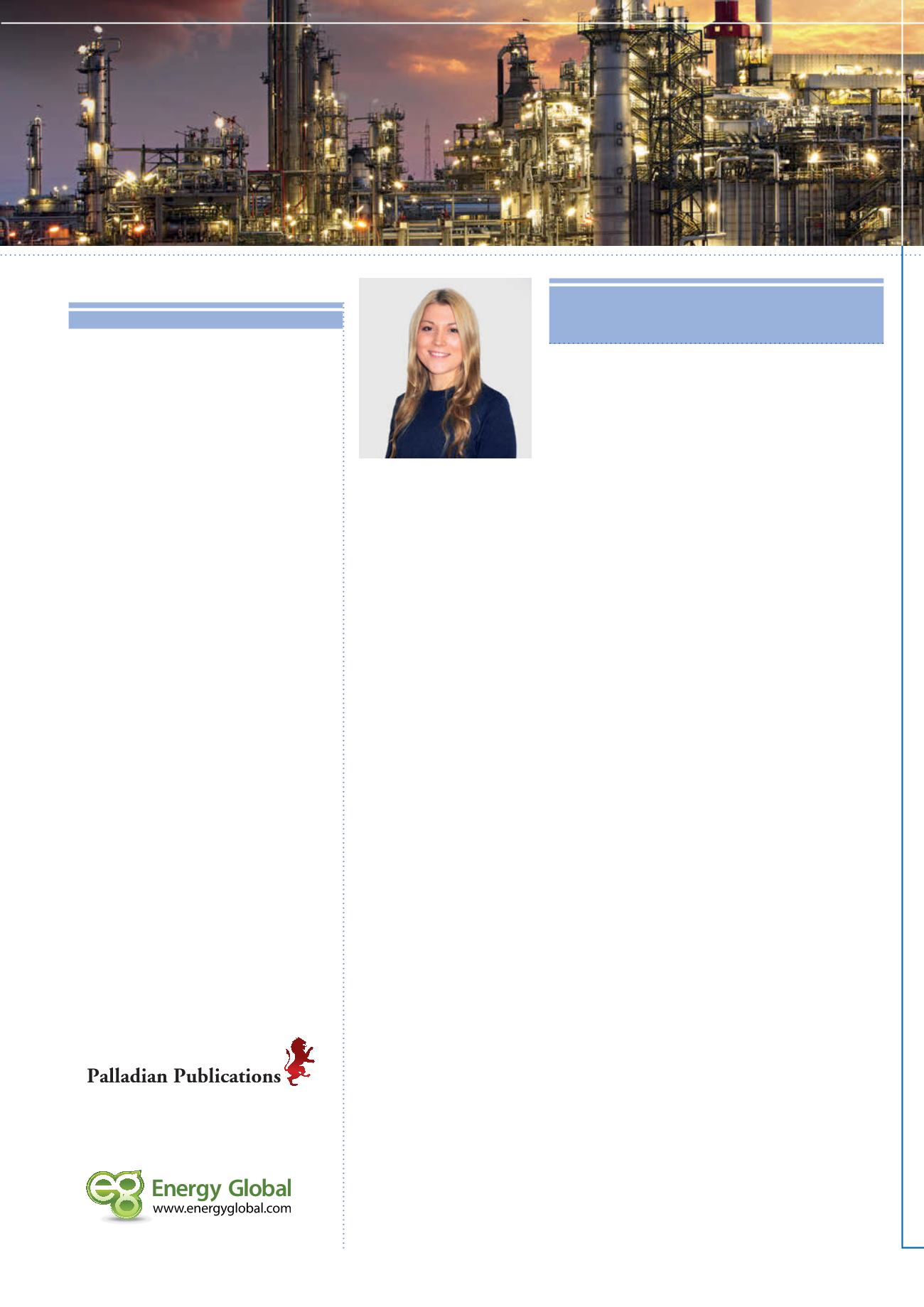
CONTACT INFO
MANAGING EDITOR
James Little
EDITOR
Rosalie Starling
EDITORIAL ASSISTANT
Francesca Brindle
ADVERTISEMENT DIRECTOR
Rod Hardy
ADVERTISEMENT MANAGER
Chris Atkin
ADVERTISEMENT EXECUTIVE
Will Powell
DIGITAL EDITORIAL ASSISTANT
Angharad Lock
PRODUCTION
Ben Munro
WEB MANAGER
Tom Fullerton
WEB EDITOR
Callum O’Reilly
SUBSCRIPTIONS
Laura White
OFFICE ADMINISTRATOR
Jo Repton
CONTRIBUTING EDITORS
Nancy Yamaguchi Gordon Cope
SUBSCRIPTION RATES
Annual subscription £110 UK including postage
/£125/
€
175 overseas (postage airmail)
/US$175 USA/Canada (postage airmail).
Two year discounted rate £176 UK
including postage/£200/
€
280
overseas (postage airmail)
/US$320 USA/Canada (postage airmail).
SUBSCRIPTION CLAIMS
Claims for non receipt of issues must be made within 3 months of
publication of the issue or they will not be honoured without charge.
APPLICABLE ONLY TO USA & CANADA
Hydrocarbon Engineering (ISSN No: 1468-9340, USPS No: 020-998) is
published monthly by Palladian Publications Ltd GBR and distributed
in the USA by Asendia USA, 17B S Middlesex Ave, Monroe NJ 08831.
Periodicals postage paid New Brunswick, NJ and additional mailing
offices. POSTMASTER: send address changes to HYDROCARBON
ENGINEERING, 701C Ashland Ave, Folcroft PA 19032
15 South Street Farnham Surrey
GU97QU ENGLAND
Tel: +44 (0) 1252 718 999
Fax: +44 (0) 1252 718 992
ROSALIE STARLING
EDITOR
COMMENT
C
an technology unlock unburnable carbon? This
was the premise behind a recent report from the
Sustainable Gas Institute (SGI) at Imperial College
London, which looks at the somewhat remarkable
capabilities of carbon capture and storage (CCS) technology
and its potential impact upon global emissions targets.
While the industry has long been aware of the benefits of CCS, these new findings shed light
onto how it may be used to 'unlock' more of the world’s fossil fuel reserves, while complying
with global temperature objectives – now that’s something worth paying attention to.
The climate change debate was ramped up a gear last November, with Paris hosting the
much talked about 21
st
Conference of the Parties (COP21). Here, global leaders made a pledge
to limit global warming to well below 2˚C in the world’s first single agreement uniting all
nations in the fight against climate change. While this, of course, marks a significant moment in
environmental history, and is crucial for the preservation of our planet, to achieve these goals,
a large proportion of the world’s fossil fuels would need to remain untouched, or ‘unburnable’.
Being our primary source of energy – fossil fuels will still account for more than three quarters
of world energy consumption through 2040, according to EIA projections – this solution is far
from ideal.
That’s where CCS comes in. SGI estimates that the technology is currently capable of
capturing approximately 85 - 90% of total CO
2
emissions, with the remaining 10 - 15% of
residual emissions emitted into the atmosphere. Researchers argue that if these emissions
could be reduced to around 1 - 5%, this would allow for the 'unlocking' of more fossil
fuel reserves, and make a viable, environmental case for their continued use and future
development.
CCS has been under development in the oil and gas industry for many years. The
CO
2
Capture Project was formed in 2000 as a partnership of major energy companies working
to advance CCS development. The project, currently in its fourth phase (CCP4), aims to further
knowledge in the three CO
2
capture scenarios addressed in previous phases (refinery, heavy oil
and natural gas power generation), together with a new scenario – CO
2
separation from natural
gas production. CPP4 counts BP, Chevron, Petrobras and Suncor within its current membership,
while previous phase members included Shell, Eni S.p.A., ConocoPhillips, StatoilHydro, Encana,
EPRI and Repsol. The initiative, which is supported by the US Department of Energy, European
Union and the Research Council of Norway, has undertaken more than 150 projects since its
founding.
Large scale CCS ventures are currently in operation, or under development, all around
the globe: two worthy of note include Shell’s Quest and Chevron Australia’s Gorgon projects.
The Quest CCS project, which commenced operations in Alberta, Canada, in November
2015, is designed to capture more than 1 million tpy of CO
2
from Shell’s Scotford Upgrader,
which transforms oilsands bitumen into synthetic crude. The CO
2
is then transported via
pipeline and injected more than 2 km underground. Quest received strong support from the
governments of Alberta and Canada, which provided some CAN$865 million in funding. Across
the pond, in Australia, Chevron’s Gorgon CO
2
Injection Project is currently under development.
The project involves the design, construction and operation of facilities to inject and store
between 3.4 - 4 million tpy of reservoir CO
2
(separated from the natural gas stream prior to gas
processing and liquefaction) into a deep reservoir unit more than 2 km beneath Barrow Island.
The Australian Government has committed US$60 million to the project.
While there is arguably a long way to go – greater investment is required to improve
CCS technology and reduce its residual CO
2
emissions – these projects demonstrate that
governmental support is key to successful project fruition. With this help, CCS could well be a
leader in the fight against climate change.


